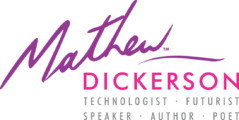It is not often that I see a member of the Gen Z cohort lost for words but I recently experienced this rare spectacle. A long-term client had made a purchase and handed over a cheque as payment. They left the store and my Gen Z staff member asked about the strange piece of paper the client had handed over. I pulled out the cheque and gave it to the staff member to inspect. They turned it over a few times in their hands and were none the wiser. I explained that a client simply wrote out an amount on the cheque and when I presented it to their bank, I was paid the amount written on the cheque.
It was at this point that the Gen Zer started moving their jaw up and down but nothing came out. Finally a flabbergasted sentence was formed: “You mean, I just write any amount I want on this piece of paper and you just accept that?” I could see the brain cells ticking over. New clothes; new TV; new car…what the heck. A new house!
When I explained the small problem that you needed the funds in the bank to cover the amount written on the cheque it still seemed problematic. “How did I know the person had enough money in the bank?” It was all too much.
Given that 66 per cent of people in the Gen Z group (born after 1996) have never used a cheque, it must seem like a foreign concept. Especially when you consider the current trends in terms of retail payments.
In the latest data from the Reserve Bank of Australia, debit cards rule the roost with 43 per cent of all retail purchases. Cash is still in second place at 21 per cent but dropping. It was 68 per cent in 2007. Credit cards are not a long way behind in third place at 16 per cent followed by direct credits and direct debits at 10 per cent and 5 per cent respectively. And the cheque, which started its modern life in 1659, is struggling for existence at 0.2 per cent of all retail transactions by number.
The progression of banking cards and electronic payments has seen the demise of the cheque. Magnetic strips were introduced to banking cards in 1971; EMV cards (integrated chip) came out in 1994; contactless was added in 2005 which led to mobile phone payments in 2011 and then wearables from 2014.
But what next? Well there is one thing that we leave home with more often than even our phone or watch. Our face! Facial recognition payment is already happening in some areas in China and is now being introduced in the US. Payment providers allow you to upload a photo of your face and link it to your bank account and if a retailer supports the payment method, you simply look at a screen to make a payment. If you like to leave a tip, you can add a hand gesture that is pre-programmed with a set amount. For example, you could use a peace sign for a 5 per cent tip and a thumbs up for a 10 per cent tip.
Are there data security and privacy issues that providers need to solve? In the same way as any new technology introduces new challenges, absolutely, but providers will work through these matters to gain the trust of consumers and before we know it, your morning coffee will be paid for with a quick glance.
Tell me your comfort level with a facial recognition payment system at ask@techtalk.digital.
Mathew Dickerson

